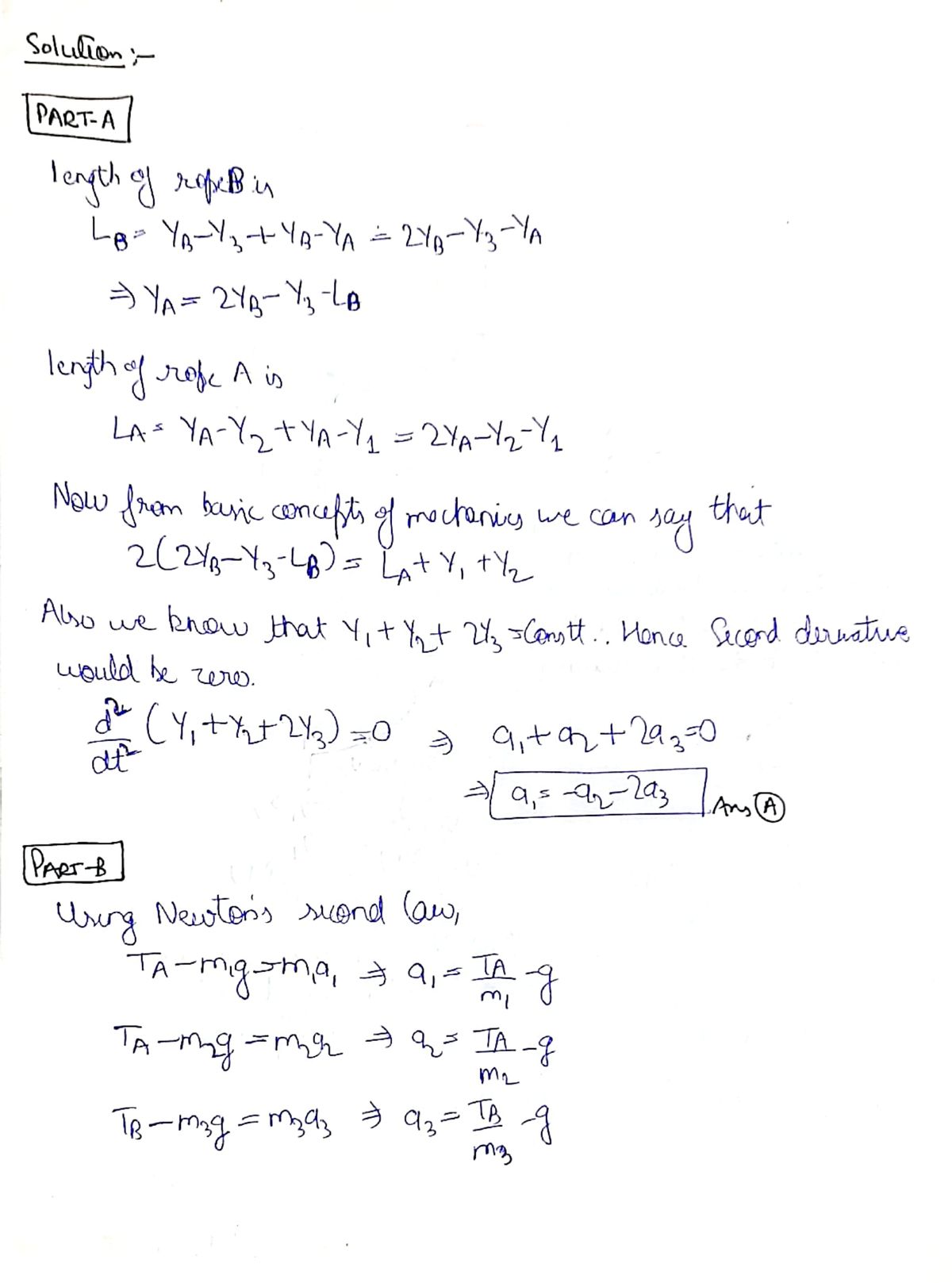A) Find the acceleration constraint for this system. It is a single equation relating a1y , a2y and a3y . Hint: yA isn't a constant. Express your answer in terms of the variables a1y and a3y . B) Find an expression for the tension in string A. Hint: You should be able to write four second-law equations. These, plus the acceleration constraint, are five equations in five unknowns. Express your answer in terms of some, all, or none of the variables m1 , m2 , m3 , and constant g . C) Suppose: m1 = 2.5 kg , m2 = 1.5 kg , m3 = 4 kg . Find the acceleration of mass 1. Express your answer with the appropriate units. Enter positive value if the acceleration is upward and negative value if the acceleration is downward. D) Suppose: m1 = 2.5 kg , m2 = 1.5 kg , m3 = 4 kg . Find the acceleration of mass 2. Express your answer with the appropriate units. Enter positive value if the acceleration is upward and negative value if the acceleration is downward. E) Suppose: m1 = 2.5 kg , m2 = 1.5 kg , m3 = 4 kg . Find the acceleration of mass 3. Express your answer with the appropriate units. Enter positive value if the acceleration is upward and negative value if the acceleration is downward.
A) Find the acceleration constraint for this system. It is a single equation relating a1y , a2y and a3y . Hint: yA isn't a constant. Express your answer in terms of the variables a1y and a3y .
B) Find an expression for the tension in string A. Hint: You should be able to write four second-law equations. These, plus the acceleration constraint, are five equations in five unknowns. Express your answer in terms of some, all, or none of the variables m1 , m2 , m3 , and constant g .
C) Suppose: m1 = 2.5 kg , m2 = 1.5 kg , m3 = 4 kg . Find the acceleration of mass 1. Express your answer with the appropriate units. Enter positive value if the acceleration is upward and negative value if the acceleration is downward.
D) Suppose: m1 = 2.5 kg , m2 = 1.5 kg , m3 = 4 kg . Find the acceleration of mass 2. Express your answer with the appropriate units. Enter positive value if the acceleration is upward and negative value if the acceleration is downward.
E) Suppose: m1 = 2.5 kg , m2 = 1.5 kg , m3 = 4 kg . Find the acceleration of mass 3. Express your answer with the appropriate units. Enter positive value if the acceleration is upward and negative value if the acceleration is downward.


Trending now
This is a popular solution!
Step by step
Solved in 2 steps with 2 images









